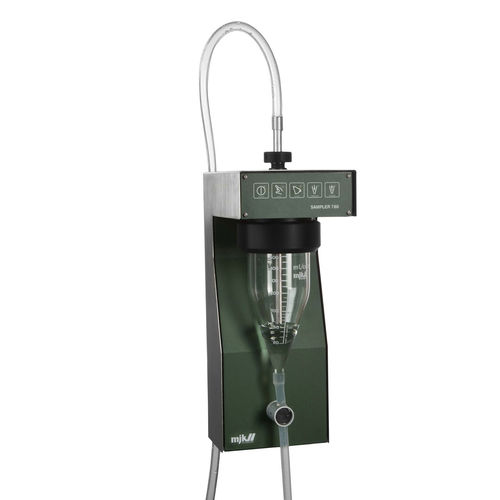
Water sampler 780automaticvacuum




Add to favorites
Compare this product
Characteristics
- Sample type
- water
- Technology
- automatic, vacuum
Description
MJK’s Sampler 780 is an automatic sampler that is often used to measure outbound water from treatment plants. As it is designed in hardwearing materials ensuring long life, the sampler is characterized by being extremely stable and very robust. This is true even when mounted in harsh environments such as a treatment plant. Back when MJK launched the Sampler 780, it was awarded the Danish Design Award.
The sampler operates by means of a vacuum, and is connected to e.g. a MagFlux flowmeter. The Sampler 780 can make flow proportional samples, making it ideal for industrial use. Sampler 780 has a built-in alarm system and automatic restarts if the hose becomes clogged. Since you can easily remove the glass and the hoses, it is also easy to clean.
For many years, MJK has supplied reliable samplers for treatment plants and industries for collecting time or quantity proportional samples. Our sampling program helps you make stable samples and gives you top-class measurements. If you want to hear more about our products within analysis measurement, you are always very welcome to contact our qualified employees.
The Sampler 780 is often used for accumulative sampling, time-controlled sampling or sampling activated by pulses from a Flowmeter or a PLC. Due to the rugged design, the Sampler 780 is often used for sampling outbound water from treatment plants.
The Sampler 780 is designed to work stably and safely without manual monitoring and has a long service life. Especially in the Scandinavian markets, the Sampler 780 has been very successful, not least due to legislation and requirements for sampling from treatment plants.
Catalogs
*Prices are pre-tax. They exclude delivery charges and customs duties and do not include additional charges for installation or activation options. Prices are indicative only and may vary by country, with changes to the cost of raw materials and exchange rates.




